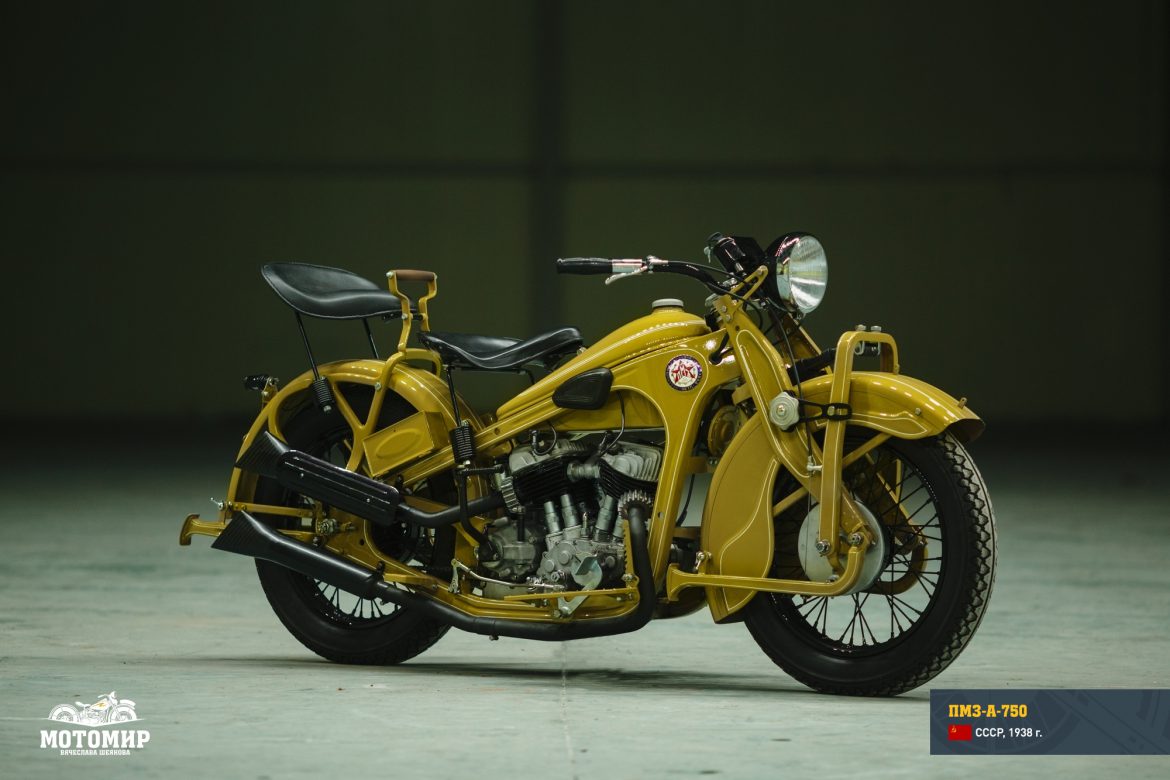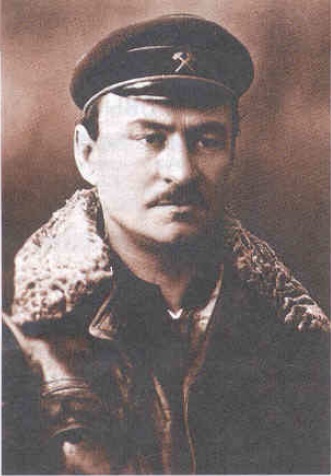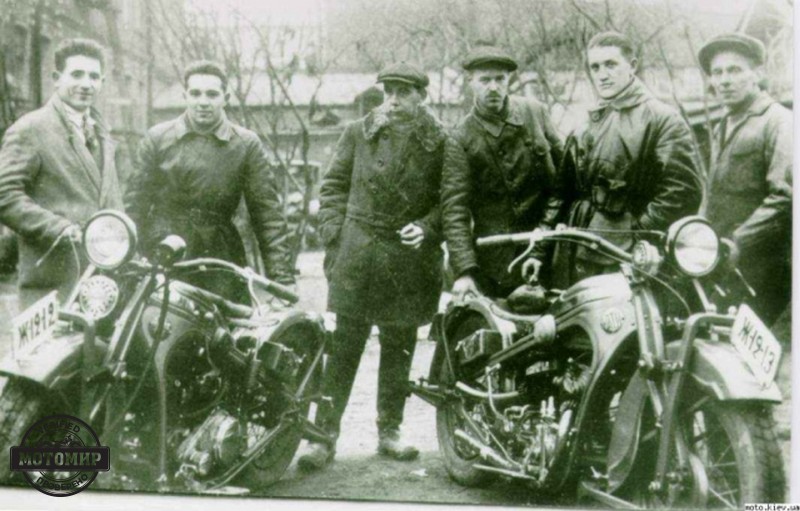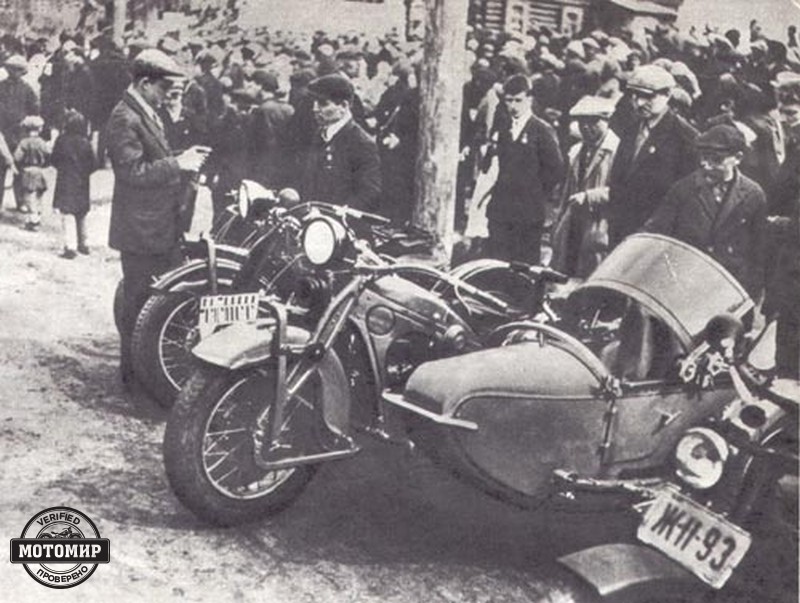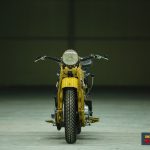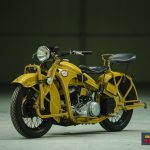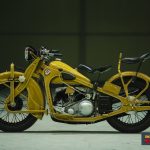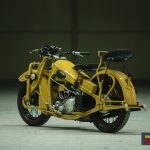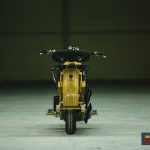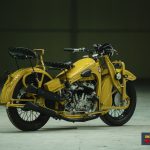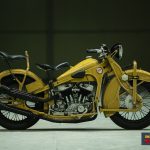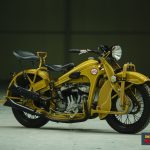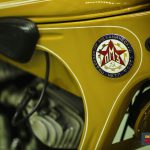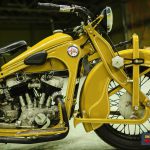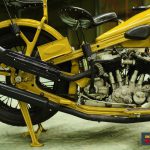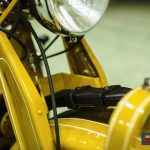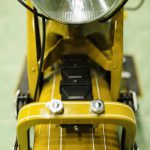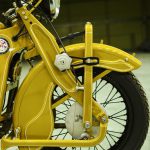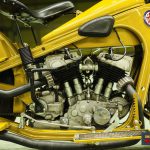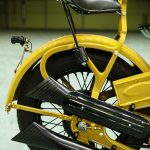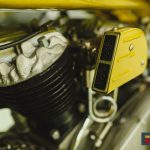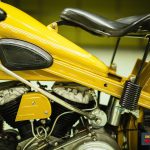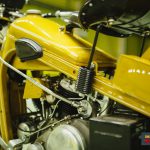This entry is also available in: Russian Chinese (Traditional)
“Peter Vladimirovich has visited eight well equipped motorcycle factories: Allright, BMW, DKW, D-Rad, Mabeco, Neander, NSU and Zündapp. Fifteen more factories he put to “out of interest” category due to the fact that they had limited production. In this category, the most interesting was the Stock works (Berlin) manufactured boldly designed light bikes.
Peter was very impressed by DKW, Zündapp and Neander. DKW works was notable for its diversity & large-scale production. Apart from bikes, it has been manufacturing outboard engines, dynamotors etc. Zündapp works was remarkable for the perfect engineering solutions. And Neander works was noteworthy for interesting design solutions and the fact that Ernst Neander (the director) has been directly involved in creative engineering process, design and testing, which really impressed Mozharov”.
Many things that Mozharov was embodied in experimental constructions. After the first Izh motorcycles were finished and tests completed, Mozharov and all his staff were moved to Leningrad where mass production of two-wheeled motor vehicles was about to begin.
Along with production of documentation for L-300 motorcycle, DKW Luxus 300 bikes underwent the tests at the Scientific autotractor institute. After L-300 went into production, Mozharov and some of his coworkers moved to Moscow where they founded a Design Bureau as a part of the Scientific Autotractor Institute. Several nameworthy engineers has been working with Peter Mozharov. Among them Sergey Ivanovich Karzinkin (test man, one of the creators of the Soyuz bike, an author of many books and articles on motorcycle design), Alexander Minovich Fedorov (who became the chief designer of the Irbit Motorworks), Igor Ivanovich Okunev (who became the head of Engine Design Bureau of the AZLK works), Boris Mikhailovich Fiterman (who became a Doctor of Engineering Science, a professor, one of the automobile chief designers).
The Design Bureau was assigned to design medium and heavy motorcycles for the Army and the national economy. The first heavy motorcycle was NATI-A-750. It combined different engineering solutions. A chassis was made in the image of BMW with an American type powertrain.
A duplex frame made of pressed profiles with enclosed petrol tank was combined with a spring front fork, which had thick pressed arms. A flathead double-cylinder V-engine (750 cc displacement) was put lengthwise on the frame and combined with a three-speed gearbox and a rear wheel chain drive. The machine was equipped with a dry multiple-disc clutch, circulation system of engine lubrication and a Delco ignition system with a HV coil and a timer-distributor of the automobile type.
The second bike was NATI-B-375, which had some parts specific to heavy motorcycles. Its engine, in fact, was a half of the A-750 engine – a flathead motor, 375 cc displacement, cylinder angularity of 13 degrees. A chassis was the L-300 chassis with some little alterations. Probably, a three-speed gearbox was also taken from L-300.
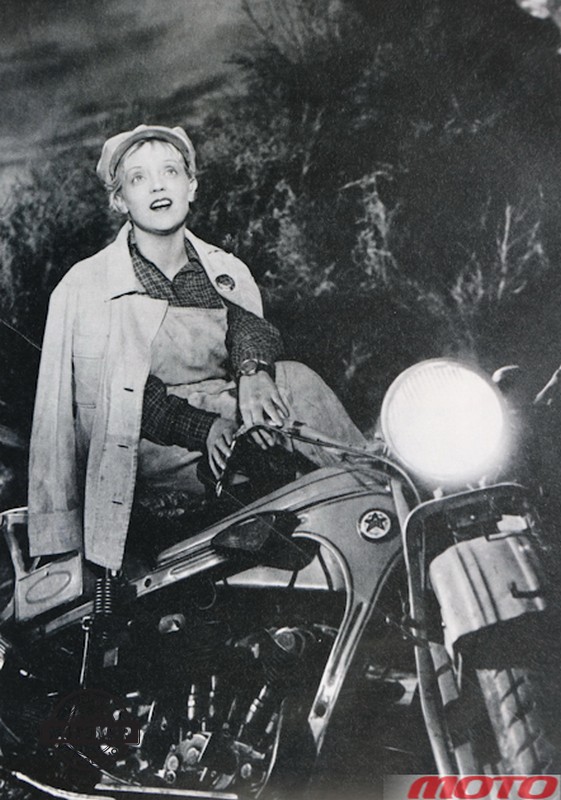
Marina Ladinina with PMZ-A-750 motorcycle in the famous Soviet film «Tractor drivers», filmed in 1939
The third model was almost a complete copy of BMW. The chassis was similar to the one used in A-750 – a stamped duplex frame made of pressed profiles and a sprung front fork. A flathead single-cylinder engine was put lengthwise on the frame – this solution determined the use of a rear-wheel-drive by means of a torsion bar. A three-speed gearbox had an automobile type crank-guide similar to the one used in BMW bikes. Mozharov gave this machine the NATI Izh-6 code perhaps because while working on prototypes of Izh motorcycles he didn’t have time to translate this design into the metal.
The first tests of engines showed figures from 16 to 18 hp, which satisfied the design input. In spring 1941, four sidecar motorcycles successfully completed the test run Izhevsk – Sarapul – Nizhny Novgorod – Moscow (however, due to the muddy season Izhevsk – Sarapul route was accomplished by steamboat).
It was planned that the mass production will start in Izhevsk concurrently with manufacturing & testing of 375 cc machines. But at the people’s commissariat that directed all these activities, another decision was made. L-300 was recommended for manufacturing in Izhevsk, and heavy motorcycles were supposed to be manufactured near Moscow at the Podolsk Plant.
The story of the Podolsk Plant began in 1900 when Singer (an American manufacturer of sewing machines) bought 30 arpents of land in Podolsk. Two years later a factory has grown and was manufacturing about 2,500 of household sewing machines per day by 1913.
After the Revolution, the factory was nationalized and manufacturing was stopped until 1923. First, it was renamed into Gosshveimashina (State sewing machines) and then, in 1931, it has got the “Podolsk mechanical works” name. The sewing machine wasn’t the only product made by the Podolsk Plant. It manufactured a wide range of products including military-oriented stuff.
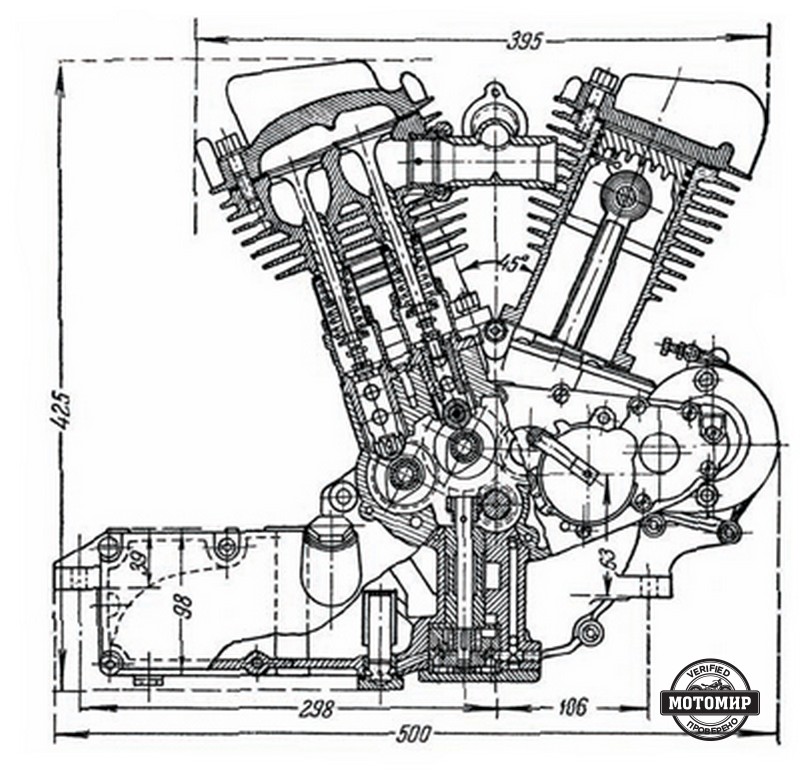
Although the PMZ-A-750 is sometimes described as the “Harley-Davidson engine in the BMW frame” in fact, when designing its power unit, Mozharov paid tribute not only to Harley-Davidson, but to Indian too. On the cross-section, a purely Harley-Davidson’s scheme with four cams is clearly visible, but like in the early Indian, the PMZ engine transmission was provided by a gear, and the lubrication system was circulating.
This was the place where Peter Mozharov arrived when he changed his workplace again. He was given a task to launch the manufacturing of motorcycles in Podolsk. It was a real tough task due to the fact the works didn’t have the pressure equipment, which was required for the manufacturing of chassis parts. In February 1934, the first motorcycle was built. It wasn’t functional though, but it was assembled using only the parts made at the factory. Later, Peter V. Mozharov took a small vacation and went to a health resort where he died a month later under mysterious circumstances… So, the shift to mass production was completed without him.
The manufacturing was set with great difficulties. Despite funding difficulties, the first ten heavy motorcycles were produced by July 1934. They’ve got a new name: PMZ-A-750. Nine machines went before Sergo Ordzhonikidze (a people’s commissar). Once he discovered it’s planned to produce only 500 machines next year, he said that at least 1,500 units must be produced.
PMZ-A-750 has been used in the Army, in People’s Commissariat for Internal Affairs, and in the civil service. These machines were willingly purchased by both citizens and villagers. The bike design was durable and solid but very capricious and basically undone. Motorcyclists nicknamed this machine as “Come on! Try to start me!”. A lot of complaints made the factory to discontinue the manufacturing by 1939. We can only guess now what it would’ve been like if Peter Mozharov hadn’t died so soon. Maybe the destiny of this bike would be different?
| Manufacturer | Podolsk Mechanical Works (PMZ) |
| Years of manufacture | 1935-1939 |
| Quantity produced, units | 4 636 |
| Price | 7 760 rubles |
| Today’s value |
| ENGINE AND TRANSMISSION | |
| Type | V-twin |
| Engine capacity, cc | 746 |
| Bore and stroke, mm | 70 х 97 |
| Engine rating | 15 hp at 3600 rpm |
| Sparking | Battery |
| Carburetor | 1, type MK-1 |
| Battery | 6 V |
| Clutch | Multiple-plate, dry |
| Transmission | 3-speed |
| FRAME AND WHEELBASE | |
| Frame type | Welded, duplex |
| Front suspension | Spring, 8 plates with damper |
| Rear suspension | Rigid |
| Brakes | Drum type |
| Wheel size | 4,00 х 19 |
| DIMENSIONS | |
| Length, mm |
2 085
|
| Width, mm |
890
|
| Height, mm |
950
|
| Wheelbase, mm |
1 395
|
| Ground clearance, mm |
115
|
| Seat height, mm |
820*
|
| Mass, kg |
206
|
| Gas tank size, l |
18
|
| Maximum speed, km/h |
95
|
| Range, km | |

